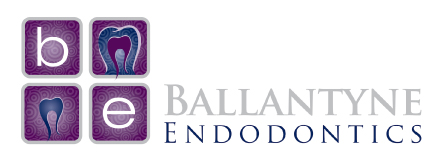How a Dental Dam Used in Dentistry Can Keep You Safe
Key Takeaways:
Enhanced Infection Control:
Dental dams isolate the tooth being treated from the bacteria present in the rest of the mouth, significantly reducing the risk of contamination and infection during procedures like root canal therapy.
Safety for Patients and Practitioners:
By covering the mouth and lips, dental dams not only protect the patient from accidental ingestion of dental instruments or debris but also shield the dental professionals from exposure to saliva or blood.
Improved Treatment Accuracy:
The use of dental dams provides a clear, dry field for dental work, enabling better visibility and control for practitioners.
When you have an endodontic procedure, and the practitioner applies a dental dam used in dentistry to your mouth, you benefit from a decades’ old method of protection for you and the dental professional. This small piece of material has numerous advantages when used correctly.
In fact, in 2017, the American Association of Endodontists put out its official position statement that dental dams should be part of all practitioners’ standard care levels. Using a dental dam, the endodontist creates a healthier clinical experience for both you and the practitioner.
What Is a Dental Dam Used in Dentistry?
In 1864, Dr. Sanford Barnum introduced the first rubber sheet to cover a patient’s mouth during a dental procedure. Many people cannot believe it is over a century old, since they are just now experiencing the dental dam at recent dental appointments. Since Dr. Barnum created this device, dentists have used it to create a cleaner environment for working on their patients’ teeth. For non-surgical procedures, the dental dam has provided the easiest, lowest-cost method for isolating teeth and protecting the patient and dental professional. Commonly, endodontists use these dams for root canal therapy and similar procedures that benefit from tooth isolation. Dentists may occasionally use them for inserting fillings, too.
Construction of the dental dam may be either latex or non-latex. Some dental professionals may use latex for general use, and non-latex dental dams available for patients with allergies. In fact, here at Ballantyne Endo, we are a latex-free office to make sure we can accommodate all patients who need us!
How an Endodontist Uses a Rubber Dam
The endodontist will use several instruments to prepare and place the dental dam used in dentistry in your mouth before the procedure. First, they will look at the tooth or teeth they need to treat to determine the holes’ size to create in the material.
Next, they will cut a hole or holes in the rubber to accommodate your teeth. They will then place the holes over the teeth and hold the dam in place with one or more clamps. Dr. Chopra likes to call it a “ring around the tooth.”
They will use a frame to stretch the dental dam over your mouth and lips, depending on its size and placement. This frame provides the required tension while it keeps the edges of the material from moving.
Dental dams vary in colors depending on the procedure and the practitioner’s preferences. For instance, some dentists prefer to use brightly colored dams to increase light in the area. Others choose to use dark materials, so the tooth or teeth stand out better. After the procedure ends, the practitioner will remove the frame, clamps, and dam before you can leave.
Is a Dental Dam Used in Dentistry Safe?
Dental dams are safe pieces of equipment used by dentists and endodontists. If your practitioner tells you that you will have one, rest assured that the process is not only safe but increases your level of protection.
When you have a dental dam in place, you will breathe through your mouth around the material’s sides and nose. If you have latex allergies, let the practitioner know to ensure that you get a non-latex dental dam. You will be more comfortable during and after the procedure by having a nonreactive rubber dam.
The majority of dental patients approve of their dentists using rubber dams. When dental practitioners have experience in quickly placing the dental dam, even patients anxious about using these devices feel more at ease. One of the most “relieving” effects is that the dam keeps water from going down your throat. This helps eliminate that “drowning feeling” you get when you are at the dentist. Proper communication and patient education are also important for recognizing how safe and beneficial dental dams.
Benefits of a Dental Dam During Endodontic Procedures
A dental dam used in dentistry offers a myriad of benefits for practitioners and patients. Below are some of the advantages of dental dam use:
1. Prevent Contamination of the Site
Your mouth has bacteria in it, and when an endodontist performs a root canal, you need protection from those germs naturally in your mouth. A dental dam isolates the tooth from the bacteria in your mouth, which reduces the chances of an infection in your treated tooth. The last thing you want to do is re-infect the tooth while you are trying to disinfect it. Plus, any bacteria released during root canal therapy stays out of your mouth.
2. Protect Practitioners
Using a dental dam can protect practitioners from excessive exposure to saliva or blood from patients’ mouths. By covering the mouth and lips, the dam protects patients from getting cut by dental instruments. With a lower chance of bleeding and a covering over the mouth to prevent aerosol spray from saliva, dental dams prevent spreading contagious diseases from patients to practitioners.
3. Safer Dental Care
With the mouth completely covered, the patient cannot aspirate any dental tools or tooth debris. Therefore, the patient has a more comfortable, safer experience.
Reducing bleeding chances is another way that dental dams protect both patients and practitioners. As noted, dental professionals can stay healthier. Patients, too, benefit from a reduced chance of bleeding when they have dental dams used on them. The dam’s rubber protects the lips, gums, and mouth tissues from scrapes, nicks, or cuts that could happen if the patient didn’t have a protective covering over their mouth.
4. More Accurate Treatment
Isolating specific teeth for a procedure ensures that dentists have a clean, dry area to work. Since the frame of the dental dam also holds the mouth open, more light reaches the worksite. With better light and dryer conditions, dental products such as fillings can set better. Additionally, the dental practitioner does not have to worry about saliva or oral debris impeding their work.
Schedule a Visit for Care at Ballantyne Endodontics
We at Ballantyne Endodontics commit to keeping our patients and staff safe during all procedures. Part of our safety standards includes applying a dental dam used in dentistry to each patient. We continue to use this standard as part of our procedures to prevent the spread of COVID-19. When you think about it, the rubber dam serves as a mask while your mouth is open in the dental chair.
If you need endodontic care in the Charlotte area, ask your dentist to refer you to Ballantyne Endodontics. We take pride in offering high-quality services for all our patients by using the most up-to-date, evidence-supported standards of care.

